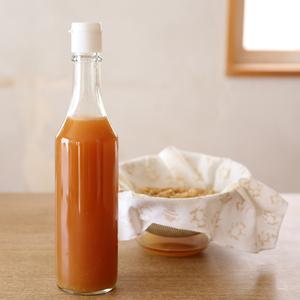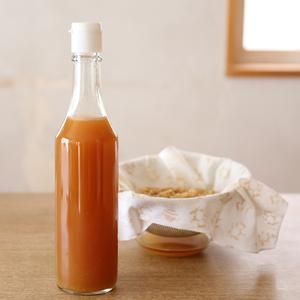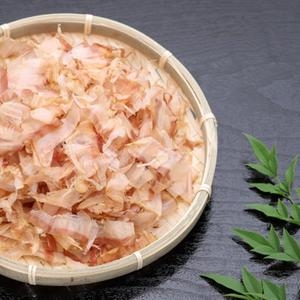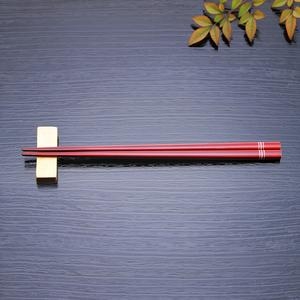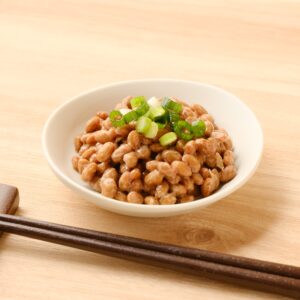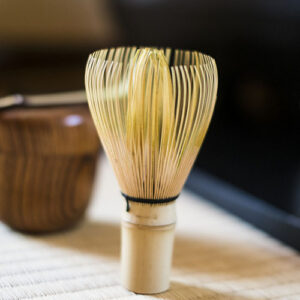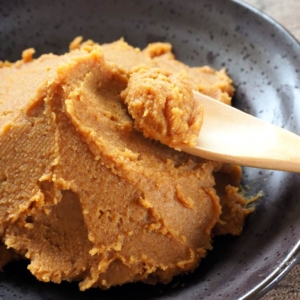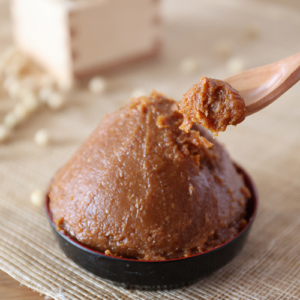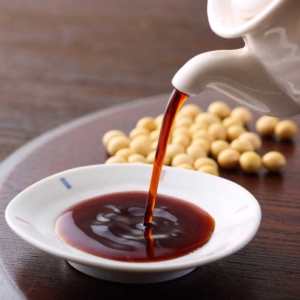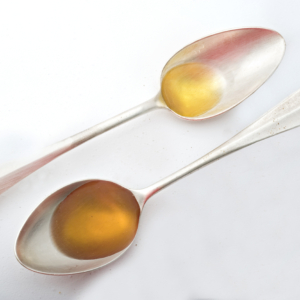As one of the Japanese cuisine’s enthusiast, I have heard about the word “mirin” or the Japanese sweet rice cooking wine. But now, when I think about it again, I don’t really know what it is and how mirin takes its role in Japanese cuisine.
So “What is mirin, anyways?”
Here, we would like to learn more about mirin – what is mirin’s substitute, how to use mirin, mirin varieties, how to store it, how it is produced, and get some interesting facts about mirin in addition!
It’s a long and detail article, so we made this navigation panel to help you find the content you want to read further in this second! Happy reading!
 Content List
Content List
- What is Mirin?
- What is The Substitute for Mirin?
- Know The Types of Mirin
- 1. Hon Mirin (Real Mirin)
- 2. Mirin-fu Chomiryo (Mirin-like Seasoning)
- 3. Fermented Seasoning (Mirin Type Seasoning)
- History of Mirin
- How to Make Mirin
- How to Use Mirin
- Is Mirin is Safe for My Child? How to blow off the alcohol content from Mirin?
- How To Store Mirin
- Recommended Dishes Recipes that Uses Mirin
- Recommended Mirin Products
What is Mirin?
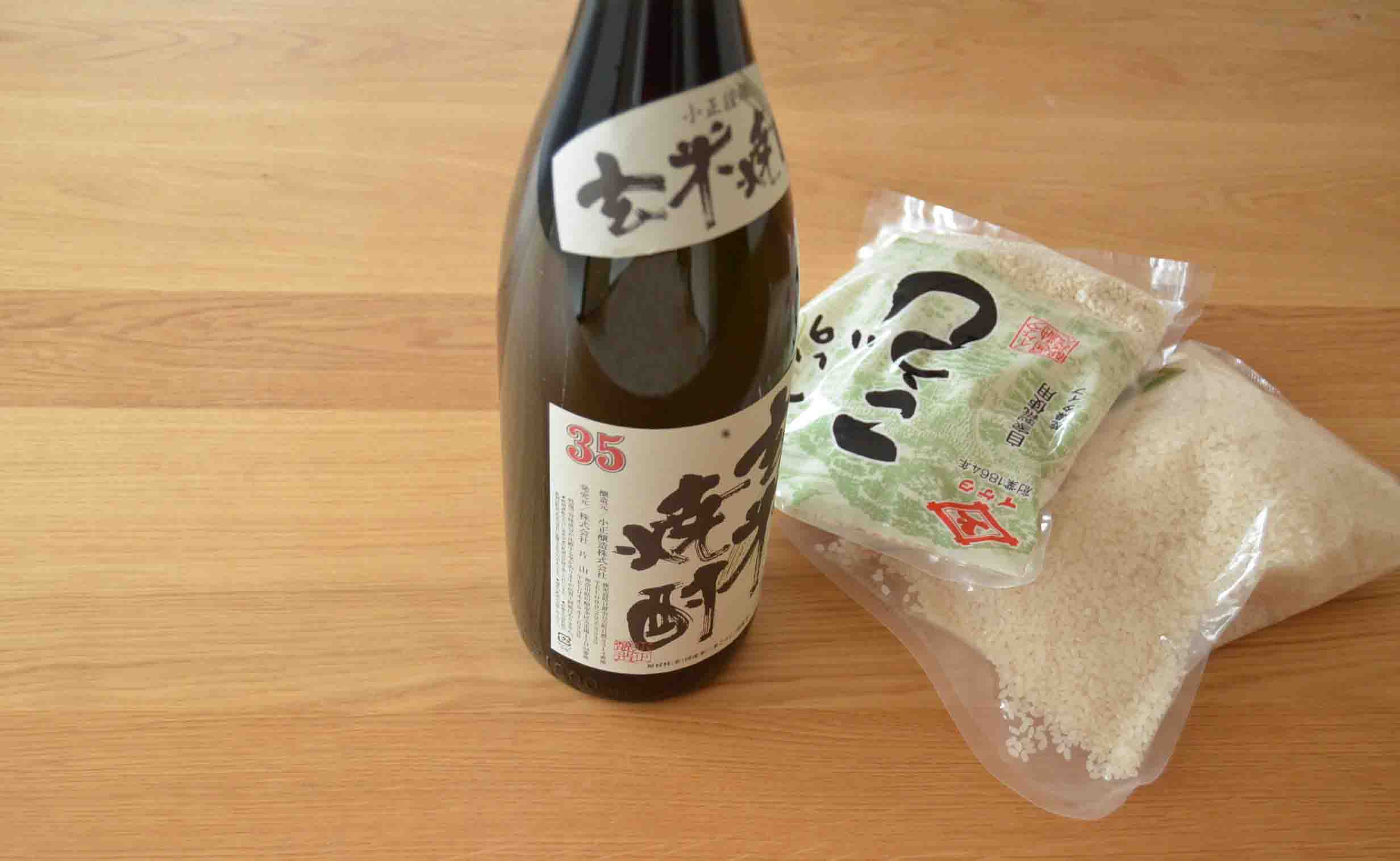
Mirin is an essential condiment used in Japanese cuisine which has a golden color in syrupy, liquid consistency. It has a subtle sweetness with a richness that is hard to explain until you taste it yourself.
Mirin is made in a natural saccharification or fermentation of glutinous rice + rice malt (koji) + shochu. The sweetness of mirin is because malt (koji) converts the starch in the rice into a lot of sugar.
It is a type of rice wine, similar to sake but with a lower ABV (around 10 to 14 percent) and a higher sugar concentration (often 45 percent sugar).
Mirin is mainly used for cooking like teriyaki, yakitori, but some are good enough to drink.
We will discuss more detail about this later, so get curious about it!
It also contains a lot of amino acids, it can give food sweetness, shine, and add a good aroma in it.
Know these interesting facts of Mirin!
Mirin has an unexpected benefits and facts for your cooking.
I found some interesting facts when I do a research about mirin, please check the points below!
• Rich in sugar (formed during the natural saccharification process) without adding any sugar.
• The taste of mirin is easy to absorb into an ingredient because of its sugar content, therefore it is very suitable for marinades, stewed dish (nimono), glazes and sauces.
• Helps to suppresses the raw-smelling odor of meat and fish.
• When using mirin for sauces, it could thickens the sauce and adds a wonderful glaze to it.
• Prevent the boiled ingredients (like potato or fish) not to collapse easier.
• November 30th is the Official Mirin Day in Japan, called the Hon Mirin Day.
Why Japanese cuisine often use Mirin?
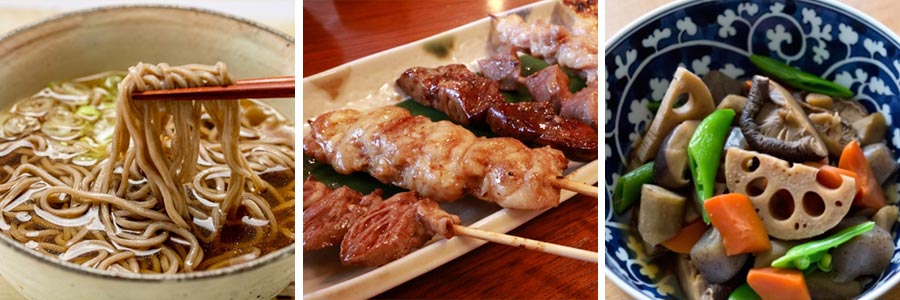
Do you wondered why Japanese cuisine often use mirin?
One of the reason is because traditional Japanese cuisine is said to have a rather simple flavor.
Mirin adds a natural sweetness, richness, and umami to the Japanese cuisine. Mirin is an essential condiment to make the dish more flavorful.
Another reason is Japanese cuisine often uses fishes rather than meat since ancient times.
Using mirin in fish dishes can help to remove the fishy smell from the fish, and maintain the shape of fish when it is boiled.
What is The Substitute for Mirin?
“I ran out of mirin and doesn’t have time to repurchase at this moment!”
Do you have this kind of experience before?
For those who need mirin at any second but don’t have time to buy it at the grocery stores or online shops, we have an idea for mirin substitute.
Mirin Substitute is Sake and Sugar
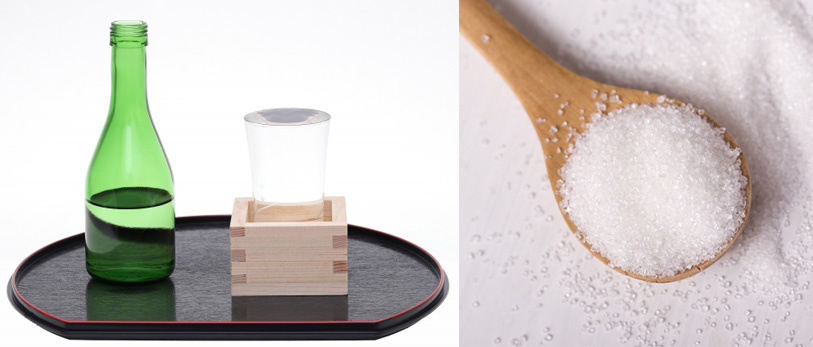
Mirin can be substitute with this ratio:1 tablespoon of mirin = 1 tablespoon of sake and 1 teaspoon of sugar
You can also replace sake with white wine because it also has sweetness.
Cooking alcohol could be used too, but the taste will be a little bit different because it contains salt.
If you can not use alcohol for religious or other reasons, you can replace sake with water. There are also halal mirin that already have halal certification.
Honey for Mirin’s Substitute
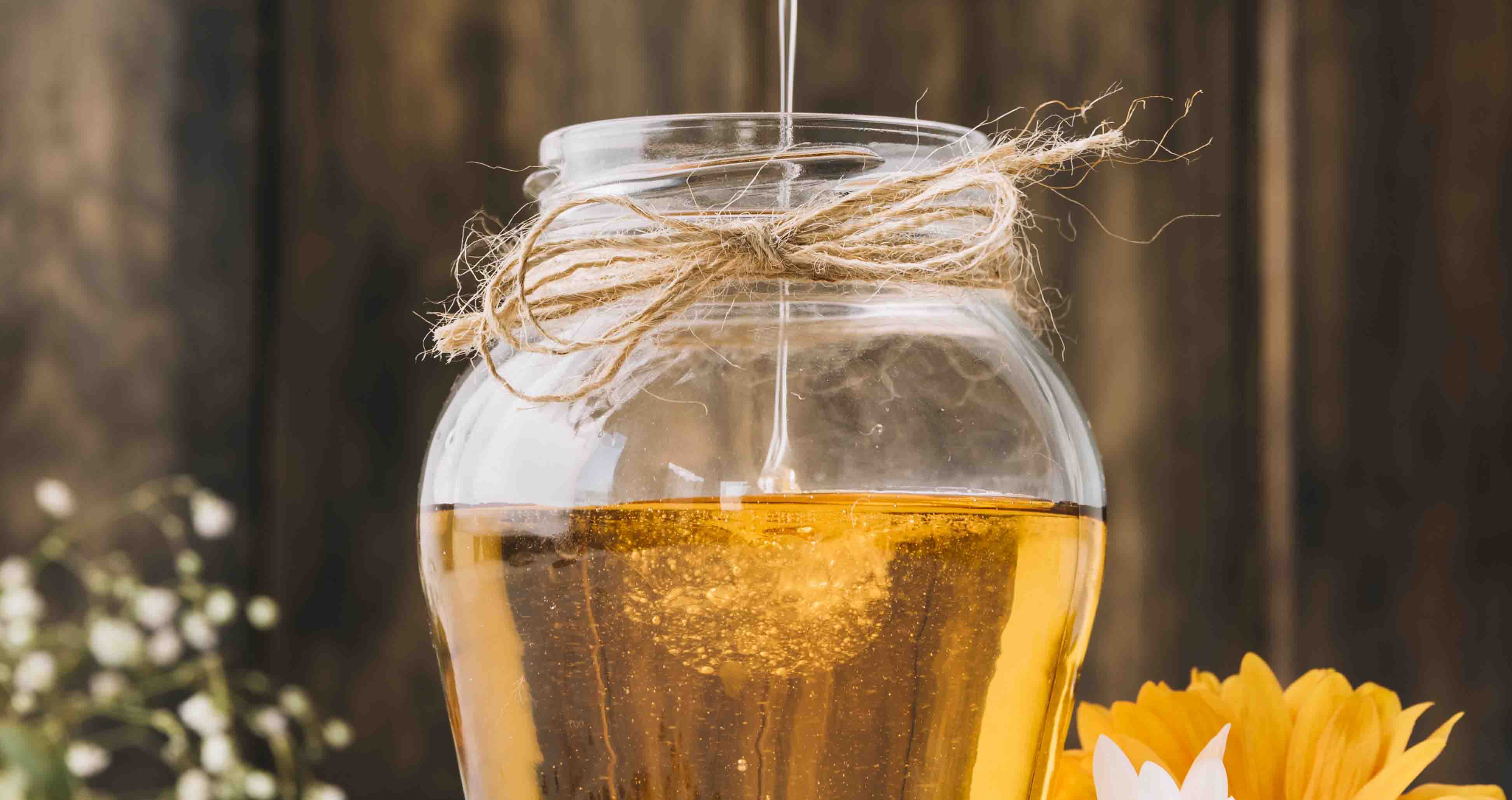
Honey is also recommended to use instead of sugar.
If you use honey, it will taste almost like mirin. But let’s note that honey has higher sugar content than sugar, so please mix it slightly less than when using sugar.
Can I Substitute Mirin with Rice Vinegar?
The answer is NO. The two products are both made from fermented rice, but they have a different production process, therefore they have different flavor profiles.
You may notice some website suggests that rice vinegar can replace mirin, but we don’t recommend you to use rice vinegar as mirin’s substitute. Besides, using vinegar could add acidity to your food.
Take a look at the table below to spot their differences!
| Difference | Mirin | Rice Vinegar |
|---|---|---|
| Ingredients | Made from fermented glutinous rice + rice malt (koji) + shochu | Made from fermented rice and water |
| Flavor Profile | Suble sweet flavor | Has acidity, sour flavor |
| Alcohol Content | Hon mirin has an alcohol content of around 14 percent | Has no alcohol content |
| Substitute | Sake and sugar, or honey | Apple cider vinegar |
Know The Types of Mirin
Do you know that there are three different types of mirin?
You’ll find these three types of mirin sold in Asian corner grocery stores or online shops. To choose what is the best mirin to use in your dish, we will introduce three types of mirin to you.
1. Hon Mirin (Real Mirin)
Mirin made with “glutinous rice + rice koji + shochu” as the ingredients in the sac-charifi-cation process.
Hon mirin has an alcohol frequency of about 14 percent, and 0 percent salt content. It is sweet and characterized by a high alcohol content.
Hon mirin is sometimes referred to as “pure” or “real” mirin.
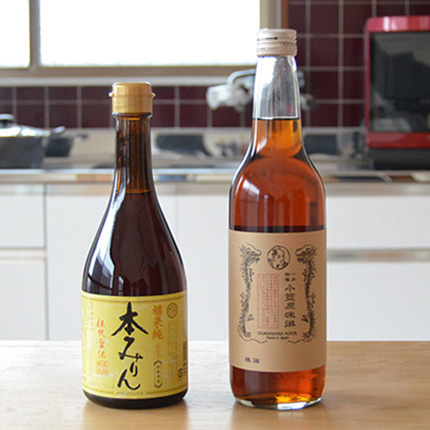
2. Mirin-fu Chomiryo (Mirin-like Seasoning)
This mirin made of starch syrup, rice, rice koji, and acidic components.
It has sweetness and a similar taste to hon mirin but only contains less than 1 percent alcohol. The salinity is also less than 1 percent.
The taste is nearly unnoticeable to hon mirin, as it melts and combines perfectly to the ingredients.
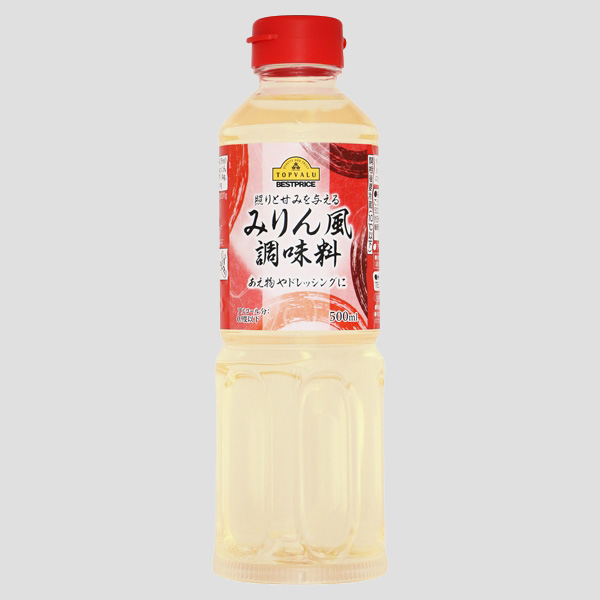
3. Fermented Seasoning (Mirin Type Seasoning)
It is mirin comprised of distilled rice, rice koji, sugar, alcohol, and salt.
Although it contains alcohol, it does not count as an alcoholic because it is not taxable for liquor tax in Japan. It also contains more salinity (about 2%) than hon mirin and mirin-fu chomiryo.
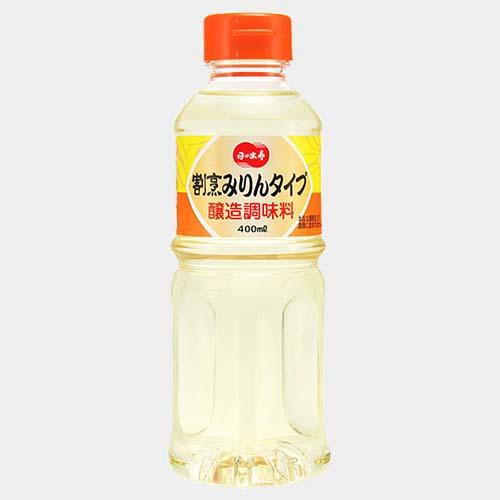
By learning about these 3 types of mirin, let’s not get lost when buying mirin.
But it is best to use hon mirin to make Japanese dish because mirin-fu chomiryo and mirin-type seasoning were made based on hon mirin. Therefore, we would like to talk more about hon mirin in this article.
History of Mirin
A History of Mirin
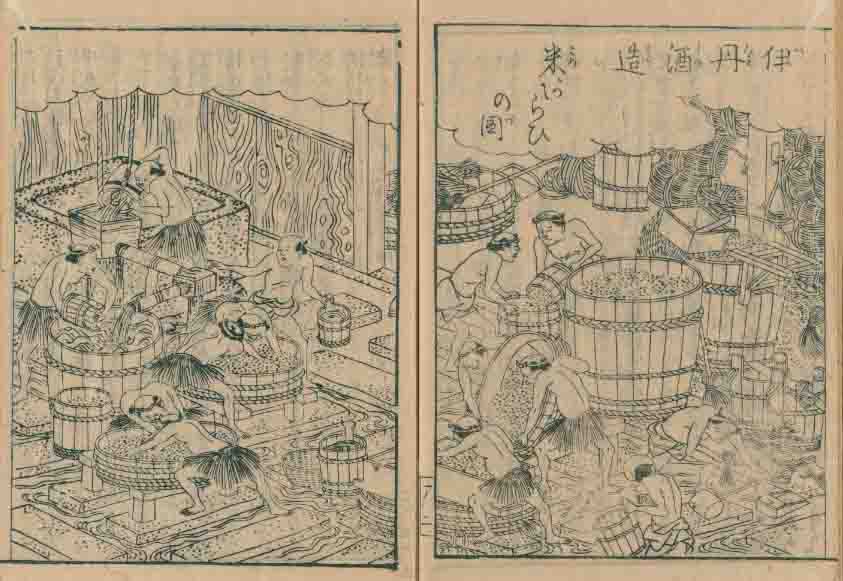
In The Edo Period, mirin was originally consumed as a high-end sweet liquor that even women could enjoy. This is before sake become the general drinking alcoholic beverage in Edo Period.
However, the mirin at that time seemed not to so sweet as today’s mirin.
That is because there was no technique to create rice malt (rice koji), that become the reason behind the mirin’s sweetness.
Mirin came to be used as a seasoning ever since the Edo Period’s cooks start to use mirin to their dishes. It used to draw the flavor and delicious taste of cooking ingredients. The original role of mirin as liquor was slowly being forgotten. And mirin became known as a condiment.
In addition, a new type of mirin was born after the Second World War.
It was mirin added with salt and without alcohol.
That is why the image of mirin became stronger as a condiment rather than as liquor these days.
Therefore, the only mirin that is drinkable is now known as hon mirin that made with only glutinous rice, rice malt (rice koji), and shochu.
So, is there drinkable mirin?

The drinkable mirin is called Hon mirin.
But you need to be sure to check the packaging of the product first.
Even though there is “本みりん” (Hon mirin) character written at the packaging, there are some hon mirin that is not suitable for drinking.
To tell the difference which is the drinkable and undrinkable mirin, let’s look out for these points:
– Please make sure the ingredients at the packaging. The only ingredients for drinkable mirin are glutinous rice, rice malt (rice koji), and shochu.
– Mirin like Seasoning and Mirin-type Seasoning are not drinkable. But, not all hon-mirin is drinkable. Therefore, please make sure the ingredients again.
– Drinkable mirin was made by traditional manufacturing method. We will learn about how mirin is produce later.
Hon mirin is delicious to drink as a liquor.
For you who is curious about how it taste, please try it once!
How to Make Mirin
We will explain the illustration of how to make mirin.
Mirin, especially hon mirin is corresponds to alcohol beverage in Japan. In Japan it is illegal to brew alcoholic beverages with more than 1 percent alcohol by volume. To produce alcoholic beverages, one must obtain a license from the director of the tax office. Producing alcoholic beverages without a license is a violation of the Liquor Tax Act. Please make sure to buy the mirin from the licensed manufacturer.
The description below are just an illustration of how mirin is produce. If you make a mirin with less than 1 percent alcohol, it should be alright. To make low percent alcohol mirin, let’s put salt into it! (We will include it to the description).
Without further ado, let’s see how mirin is produced!
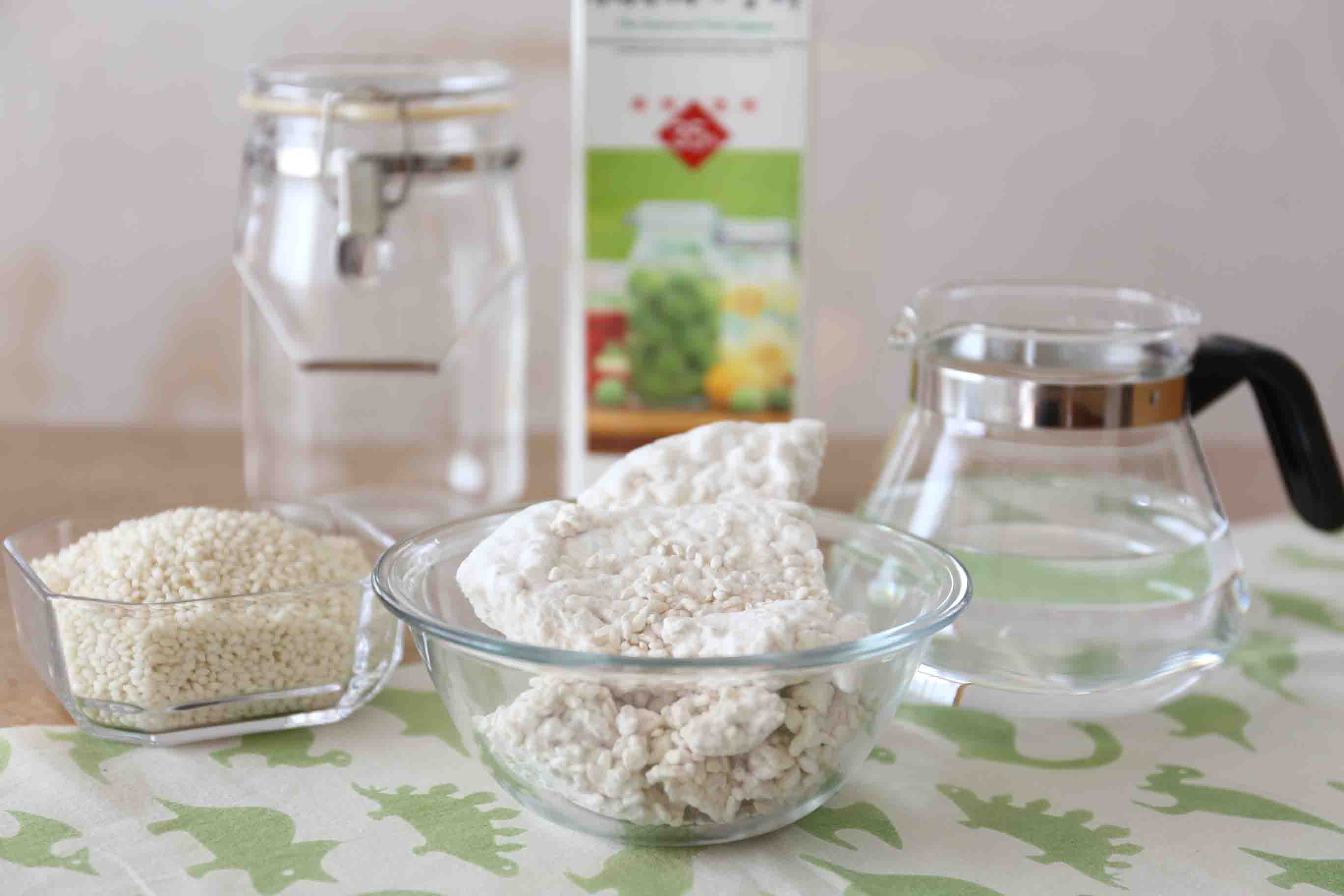
Raw Ingredients/Ingredients:
• Shochu 35%: 600cc
• Rice Malt (Rice Koji) 200g: 300g
• Sake: 2 tablespoon
• Glutinous rice: approximately 320g
• Salt
How to Make Mirin?
-
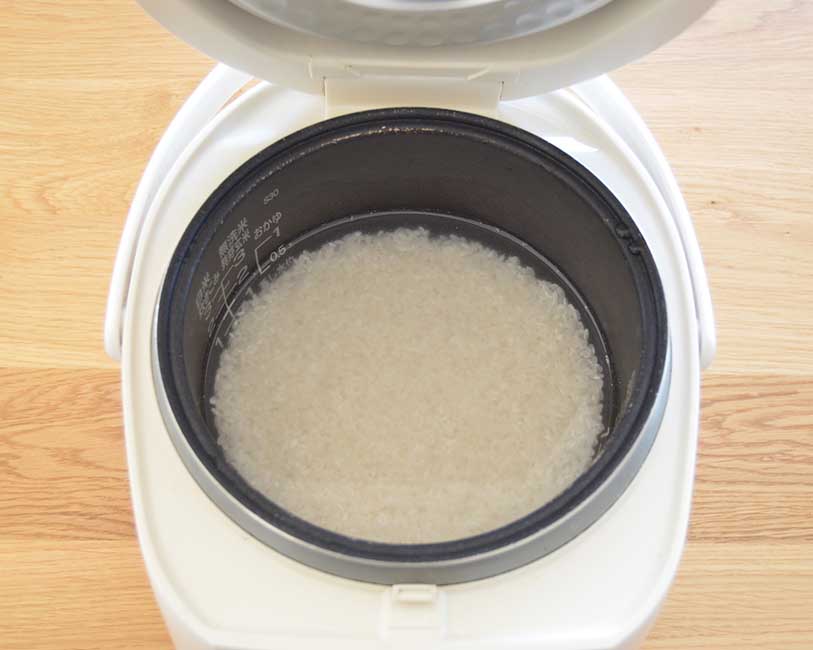
STEP 1: Wash glutinous rice and put to the rice cooker
Wash 320g of glutinous rice and put it to the rice cooker. Add the appropriate water for 320g of rice and add 2 tablespoons of sake. Leave it overnight.
-
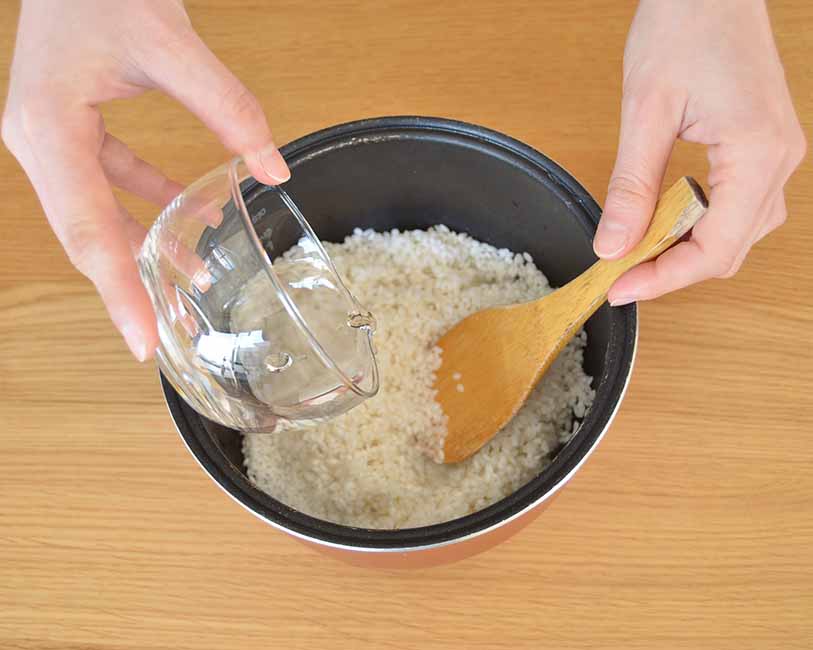
STEP 2: Cook the glutinous rice
Cook the glutinous rice with the usual electric rice cooker. Cool the cooked glutinous rice and add 600cc shochu to it.
-
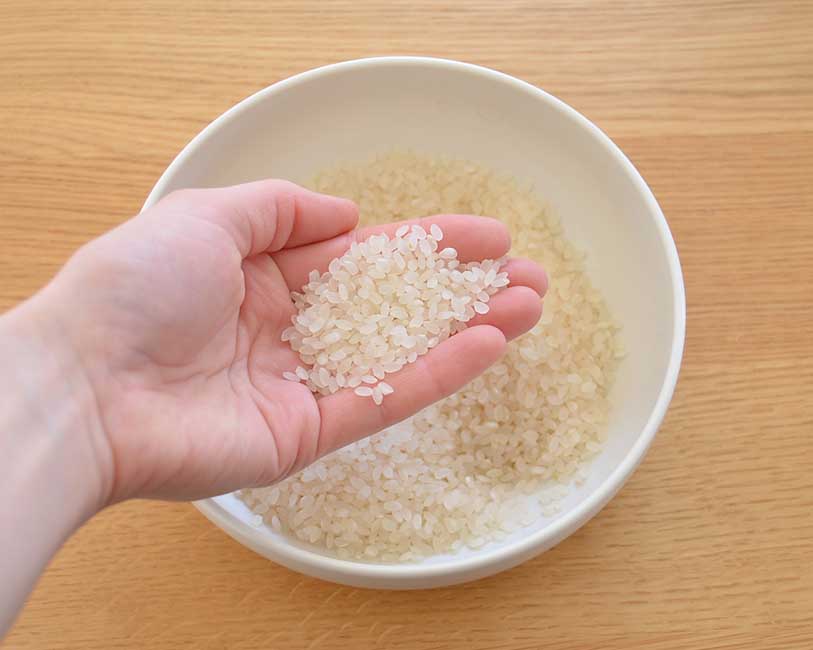
STEP 3: Spread the rice koji
Spread the solidified rice malt (rice koji) with the palm of your hand.
Mix the rice koji with the mixture of glutinous rice and shochu into one. -
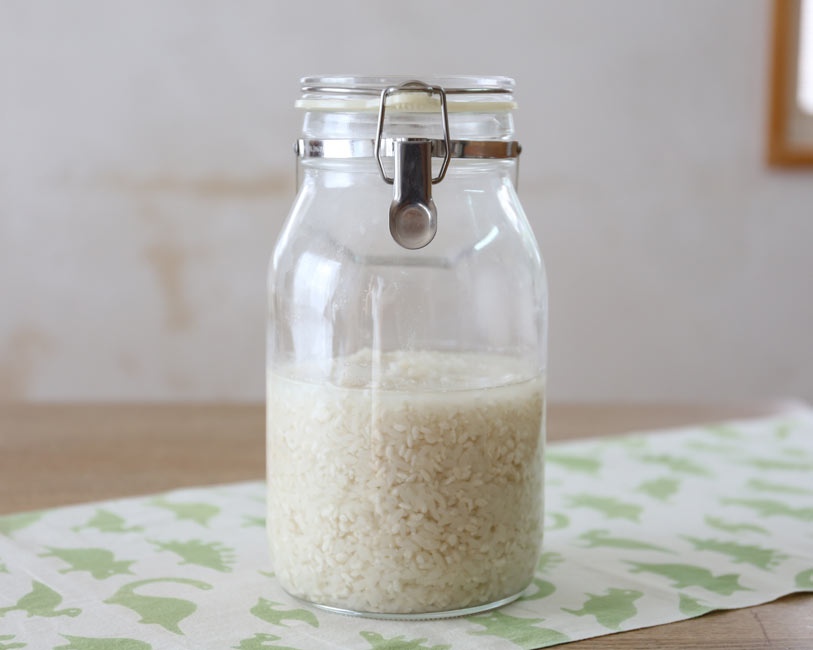
STEP 4: Saccharification Process
Pack the mixture of glutinous rice, shochu, and rice koji in an air-tight container, and aged it for about half a year. This saccharification process is mainly glycosylation of glutinous rice with Aspergillus.
To match with the measurement liquor tax law, please add 2% of the salt from the total weight. If salt is not added, it becomes a perfect brewed mirin that can be drink as a liquor too.
-
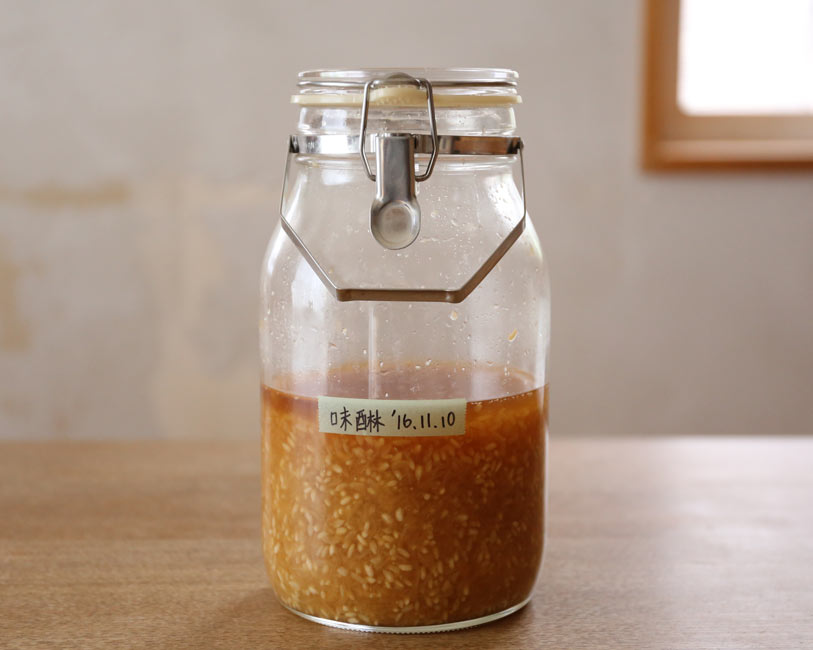
STEP 5: Golden Liquid layer appeared
The condition after half a year: there is a golden liquid layer on the top of the mirin.
-
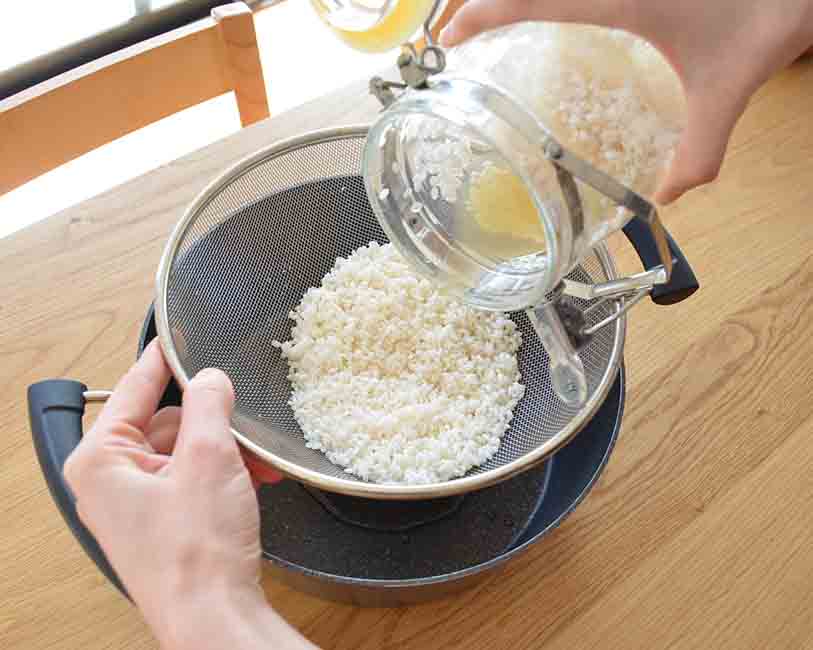
STEP 6: Filtering Process
Let’s prepare a three-layer strainer to make the filtering process easier.
Please prepare a strainer with rough texture and a strainer with a small detailed texture. Add a cloth at the end of the layer to filter the liquid.
After the mirin filtered, it will have a milky white layer due to the residue. But if you leave it for 2-3 days, the layer will disappear and the look of the completion will look like the picture below.
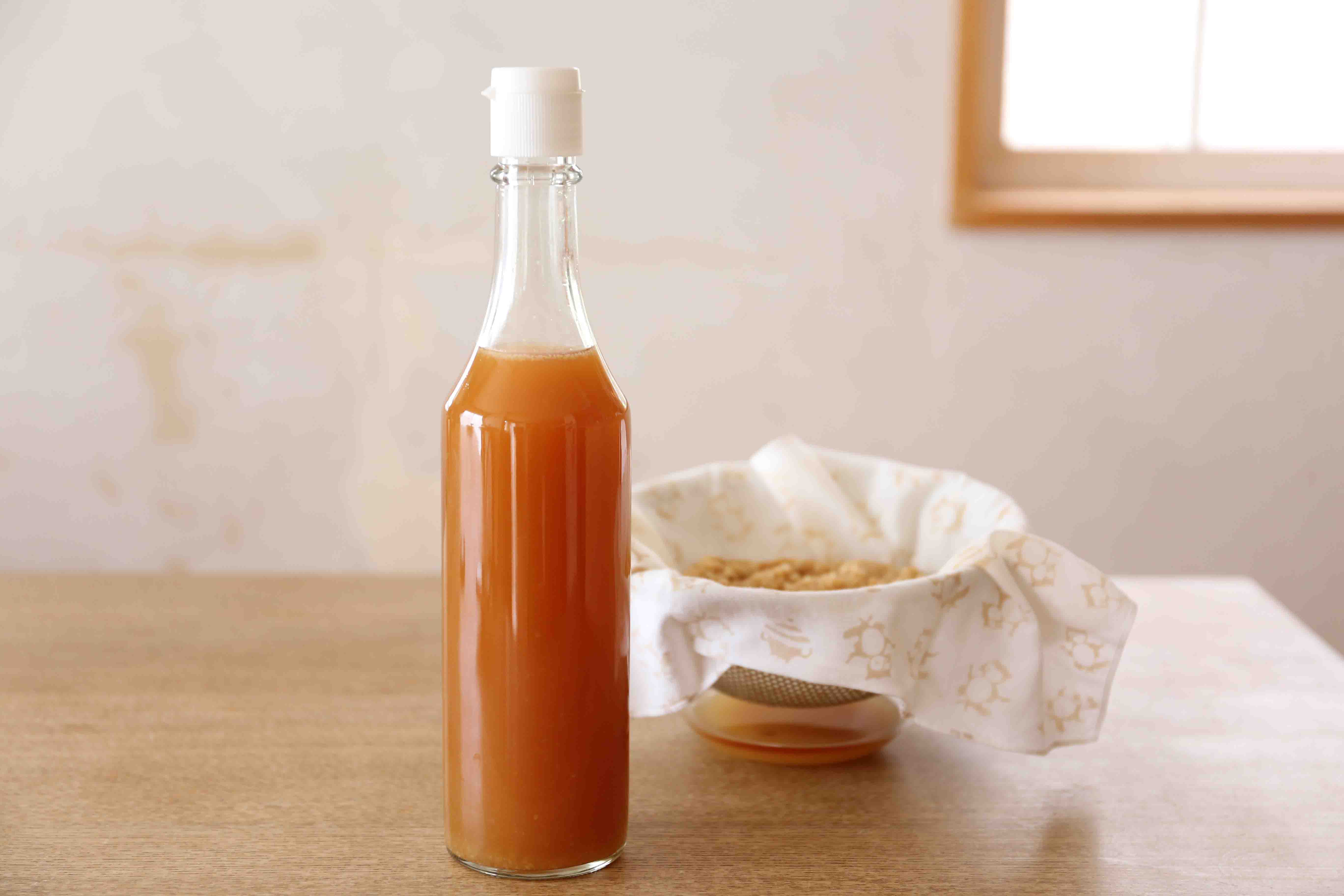
You can use the remaining residue to make pickled food.
Tips: If you saccharified the mirin again for a few days, the taste will become more mellow and delicious.
How to Use Mirin
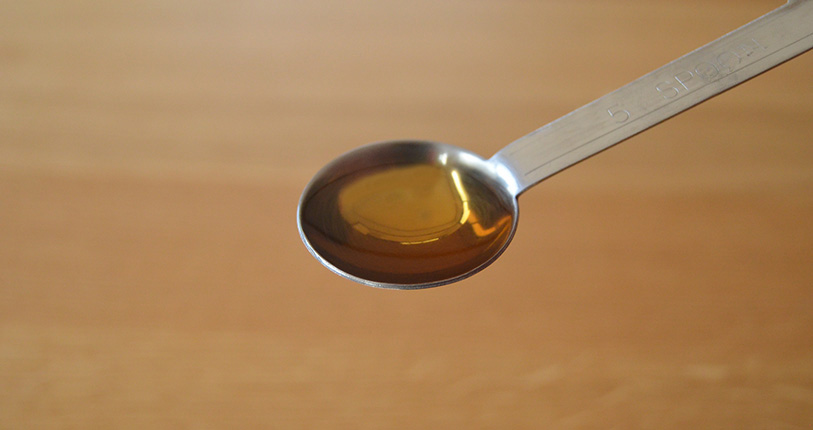
As we know, mirin has several benefits you could use in your cooking.
– Helps to suppress the raw-smelling odor of meat and fish.
– Add natural sweetness to your dish.
– Thickens sauce and adds a wonderful glaze to it.
– Prevent the boiled ingredients (like potato or fish) not to collapse easier.
It is very handy to have mirin in your kitchen shelf, especially if you like to cook Asian dishes.
Learn how to use Mirin as condiments like a pro!
Mirin is known as the taste source for teriyaki, yakitori, and some other Japanese cuisine.
But sometimes it’s confusing to choose mirin, sugar, or cooking alcohol/sake in your dish.
We will give you some tips to choose what the best condiments to use based on the dish’s taste.
If you confuse to use sugar or mirin?
・If you want to add firm sweetness to sweets → use 「sugar」
・If you want natural sweetness that’s not so sweet → use 「mirin」
If you confuse to use cooking alcohol/sake or mirin?
・If you want to add saltiness → use 「cooking alcohol」
・If you want to add sweetness, not only saltiness → use 「mirin」
Another surprising way to use Mirin
1. Add to rice when you cook rice
When you cook 450g of rice, just add 1 tablespoon of mirin and cook it like usual. Mirin will make the cooked rice more plumpy and delicious.
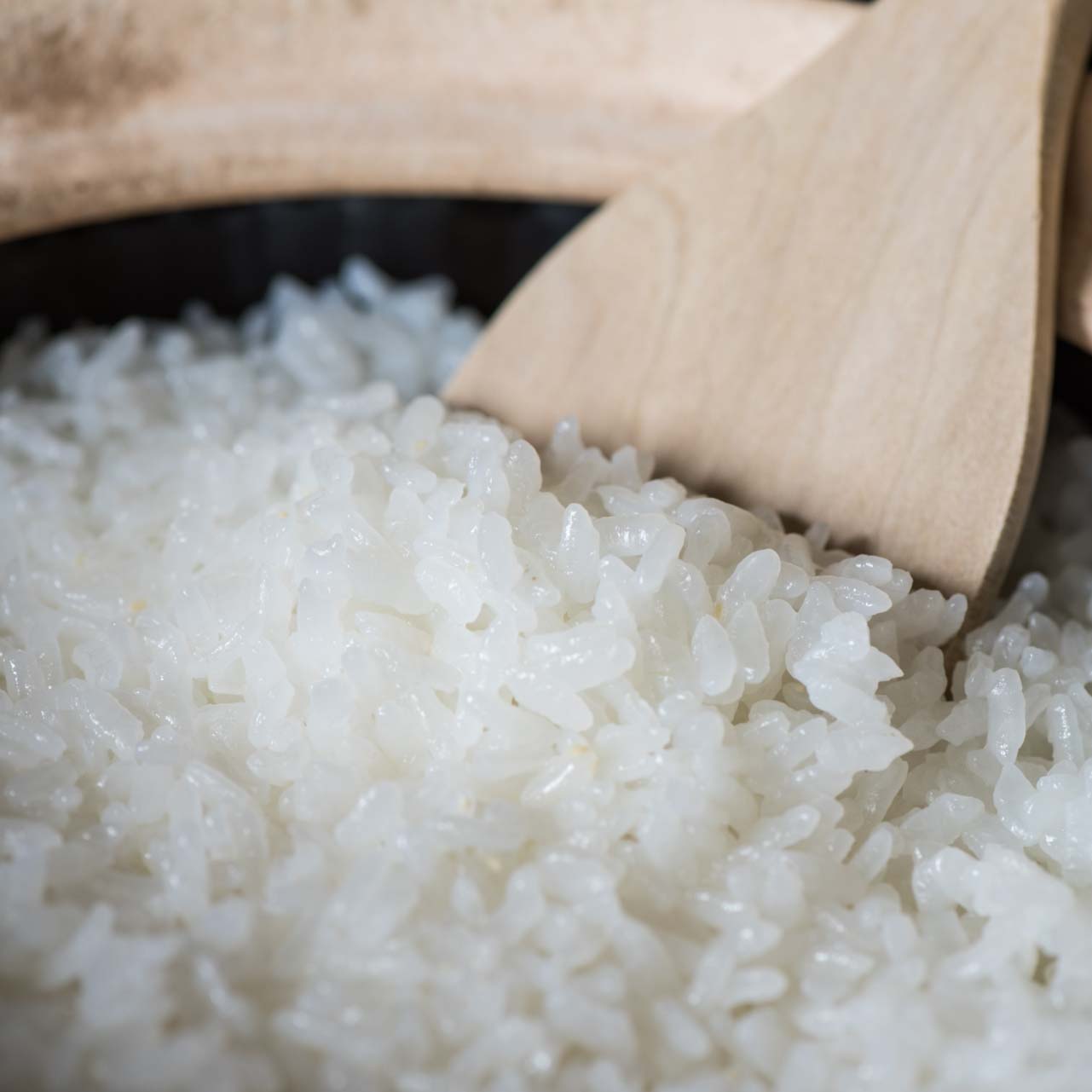
2. Add it to your pancake mixture
Replace 200 ml of milk with 1 tablespoon of mirin and melted butter in every recipe of your pancake mixture, and you will get a delicious pancake with a texture like a mochi (lumpier texture).

3. Use it to canned food
This mirin made of brewed sugar, rice, rice koji, and acidulates.
This is very unexpected but you can use it to canned food!
If you boil a canned food in a pan with one glass of mirin, you can remove a peculiar smell out and the food will look more delicious!
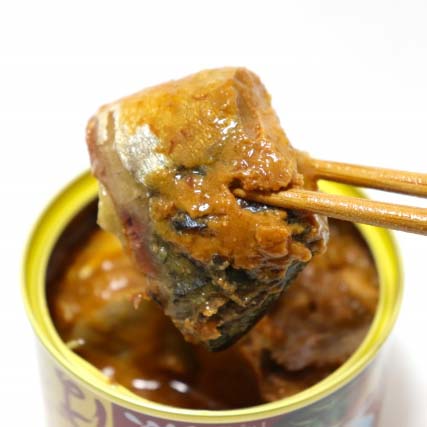
Is Mirin is Safe for My Child? How to blow off the alcohol content from Mirin?

Mothers and chefs are probably worried when they want to cook for children using mirin, especially hon mirin. Some mirin have a high alcohol content (14% alcohol content), is it safe to use for children?
Mirin in general, especially hon mirin is corresponds to alcohol beverage in Japan. On the other side, “mirin-like seasoning” and “mirin type seasoning” only contains a little alcohol so it doesn’t count as alcohol beverage.
It is wise to know that actually the alcohol content in mirin could be removed if you heat the mirin.
Even if you know that the heating process will blow off the alcohol content in mirin, some people may still worry about it. So we examined how to blow off the alcohol content from mirin and summarized it.
How to blow off the alcohol content from Mirin
The way to remove the alcohol content of mirin is called “Boiled Mirin” (nikiri mirin).
Here, we would like to tell you some ways to do nikiri mirin.
1. Heat Mirin in a Microwave
Place a glass of mirin in a deep container and heat it for about a minute. Please put it in a container which has deep surface so it won’t spill as it boils.
This method is recommended if you are going to use only small amount of mirin

2. Heat Mirin with a pot
Put 100 ml of mirin in a pot and bring it into a boil. Put it in the state of boiling in 1 to 1 and a half minutes.
This method is recommended for medium to large amount of mirin at once.
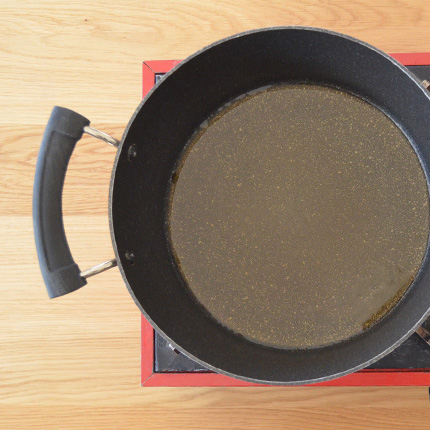
3. Burn Mirin with fire
Burn the boiled mirin with gas fire lighter, etc. to blow the alcohol. Please be careful when handling the fire because alcohol is easy to burn.
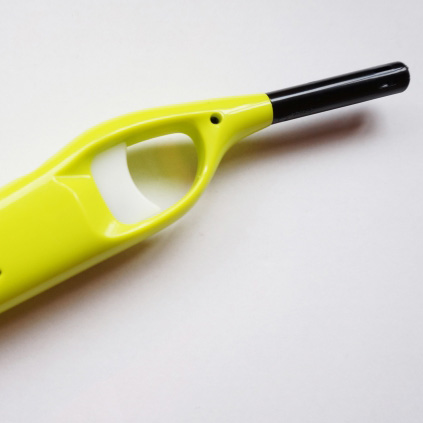
Using mirin-like seasoning is more faster and efficient because it has similar taste to hon mirin. You don’t need extra effort to blow off the alcohol content, too. But please also note that mirin-like seasoning have more sugar and salt content.
Still, hon mirin offers more merits to your dish such as improve the umami of the dish, remove the smell of fish, etc. It also characterized by its elegant and mellow sweetness that could add richness to your dish. That is why there are still many people that prefer to use hon mirin in their dishes.
How to Store Mirin
Is the mirin you bought stored in the right way?
Let’s learn the method to store mirin in your kitchen for maximum use!
The Storing Method for Hon Mirin and Mirin-like Seasoning is Different!
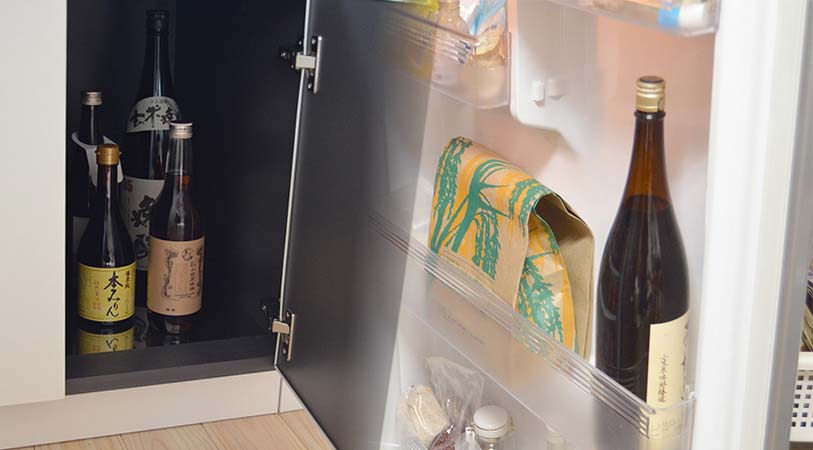
Because hon mirin and mirin-like seasoning use different ingredient, their storing method are also different.
In case for hon mirin:
The sugar content in hon mirin will crystallize when it preserved in cold temperature.
Therefore, let’s preserve it in a cool and dark place before and after opening the product, such as cupboard or pantry.
In case for mirin-like seasoning:
Mirin-like seasoning needs to be preserved in cold temperature because it contains little alcohol.
You can put it in a cool and dark place before opening, but let’s put it in refrigerator after opening.
Expiration Date
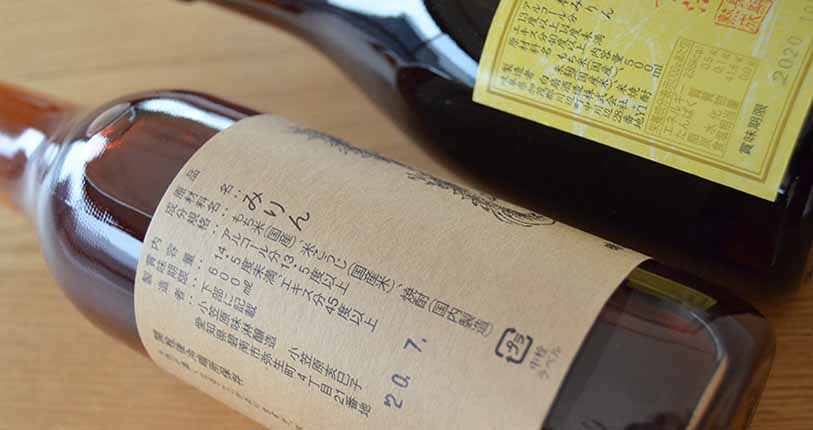
If still unopened, hon mirin could last about a year and a half from the production date. But mirin-like seasoning will last about a year from the production date.
For the opened product, we could use hon mirin and mirin-like seasoning for within three months with the preservation method we mentioned above. Every manufacturer will differ, so three months is only the approximate time.
Although mirin contains alcohol, it could oxidize which resulting in deterioration of its flavor.
This is why mirin has an unexpectedly short expiration date.
Let’s Review The Mirin in Your House!
Now you know how to preserve mirin in the appropriate way.
For you who already have mirin in your kitchen, Let’s consider replacing the mirin that had been kept for a while for the new one.
And for you who are interest to add mirin in your kitchen, Let’s preserve it well so you will always have a delicious dish if you add mirin to it!
Recommended Dishes Recipes that Uses Mirin
Here are some Japanese most loved authentic recipes you can try at home using mirin:
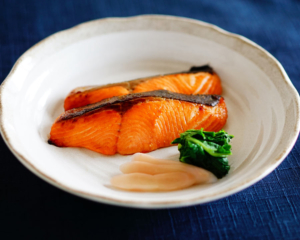
Salmon Teriyaki
Ingredients
Main Ingredients
- 2 Fillet salmon with skin
- ¼ tbsp Salt (sea salt; use half if using table salt)
- Freshly ground Black pepper to your liking
- 1 tbsp All-purpose flour
- ½ tbsp Neutral flavor oil
- 1 tbsp Unsalted butter
- 1 tbsp Sake
Instructions
- Combine all seasoning ingredients and mix well until the sugar is mostly dissolved.
- Rinse the salmon and pat dry. Season the salmon with salt and black pepper on both sides.
- Sprinkle 1/2 tablespoons of all-purpose flour on one side of salmon and spread evenly. Flip over and sprinkle the rest of flour on the other side. Gently remove the excess flour.
- Add vegetable oil and melt butter over medium heat in frying pan. Don’t burn the butter.
- Add the salmon to the frying pan. Cook for 3 minutes or until the bottom side is nicely browned, and then flip.
- Add sake and cover with the frying pan’s lid. Steam the salmon for 3 minutes or until cooked through. Remove the salmon to a plate.
- Add the mixed seasonings to the pan and increase the heat a little bit. When the sauce starts to boil, add salmon back in the pan and spoon the sauce over the salmon.
- When the sauce thickens, turn off the heat. Plate the salmon on the plate and serve immediately.

Yakitori (Japanese Grilled Chicken)
Ingredients
- ⅔ cup Soy sauce
- ½ cup Water
- 2 tbsp Mirin
- 2 tbsp Rice vinegar
- ⅔ tbsp Light brown sugar
- 1 tbsp Ginger, minced
Instructions
- Remove the skin and fat from the chicken thigh, cut into 2 cm squares, then skewer the chicken.
- Combine the all the ingredients for seasonings.
- Close the lid and heat on low heat for 5 minutes to cook the chicken.
- Once baked, place it on a plate.
- Put the yakitori to the frying pan.
- When the sauce is boiled down, it becomes more shiny and thicker, and the color becomes darker like caramel. Quickly flip both sides of the yakitori and turn off the heat.
- Keep an eye on it as it is easy to burn at the end.
- Serve on a plate, drizzle with the sauce left on the frying pan, and sprinkle with shichimi pepper if you like.

Oyakodon (Chicken & Egg Rice Bowl)
Ingredients
Main Ingredients
- ½ Chicken (thigh meat) (cut into bite-size)
- 2 eggs (whisk)
- ¼ piece Onion
- appropriate amount of Rice
- appropriate amount green onion/scallion (for topping)
Seasoning
- 1 tbsp Shoyu
- 1 tbsp Mirin
- ½ tbsp Sake
- ½ tbsp Sugar
- 80 cc Dashi Stock
Instructions
- Put the seasoning ingredients and chopped onions in the frying pan. Boil with medium heat. Let it simmer.
- Boil for another minutes on medium heat until the chicken is cooked.
- Add 2/3 of the egg mixture into the pan and mix with chopsticks.
- Add the remaining beaten egg and simmer on medium heat until half-cooked.
- Serve on top of rice in a bowl. Oyakodon is ready to serve.
- You can add green onion/scallion as topping
Notes
- If you don't have time to make your own dashi stock, you can use dashi packets simmered with 80 cc of water,
- or simply dissolve 1/3 teaspoon of dashi granule or powder with 80 cc water.
Recommended Products for Mirin
Recommended Mirin Available on Amazon USA
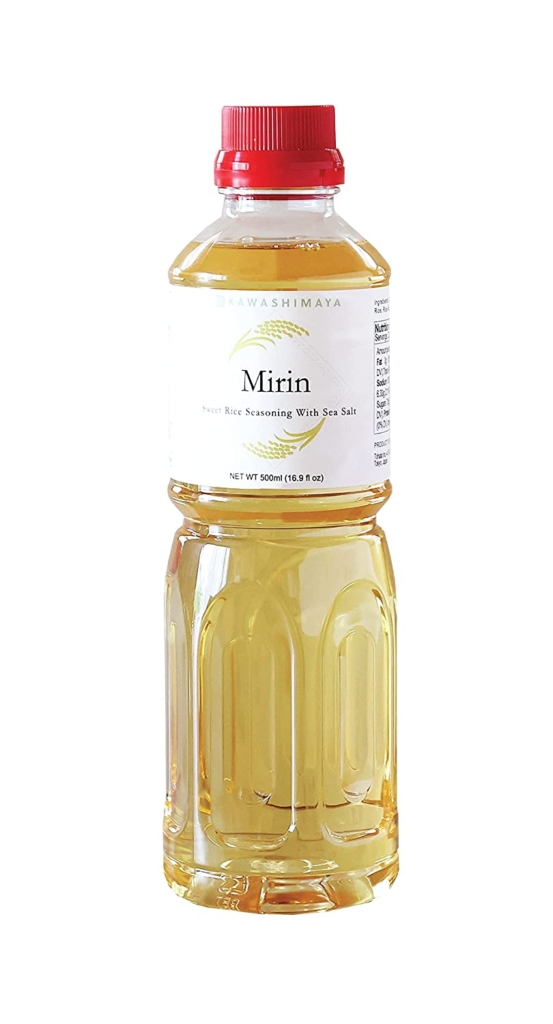
Mirin Sweet Rice Seasoning 500 ml (16.9 fl oz) – Traditional Umami Cooking Wine, Made in Japan by Kawashimaya
Indispensable sweet rice seasoning with strong umami taste, full-bodied richness, refreshing aftertaste, and smooth consistency for daily cooking. Vegan and Gluten-free mirin. Use 100% Japanese domestic rice. Made in Japan.
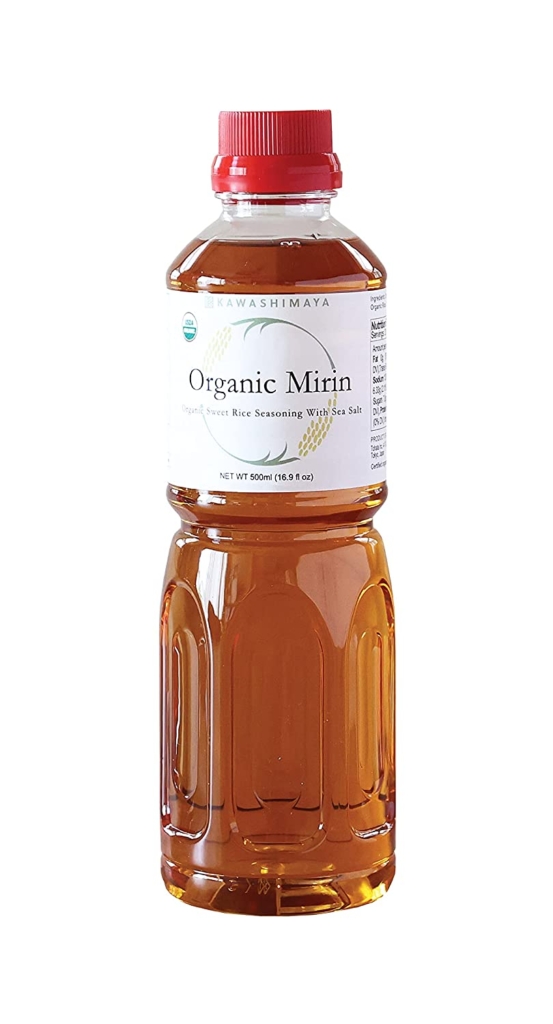
Organic Mirin Sweet Rice Seasoning 500 ml (16.9 fl oz) – Traditional Umami Cooking Wine, USDA Certified, Made in Japan by Kawashimaya
Premium secret cooking ingredient with umami, full-bodied richness, and smooth consistency. USDA Certified, Vegan, and Gluten-free sweet rice seasoning. Use 100% Japanese domestic rice. Made in Japan.
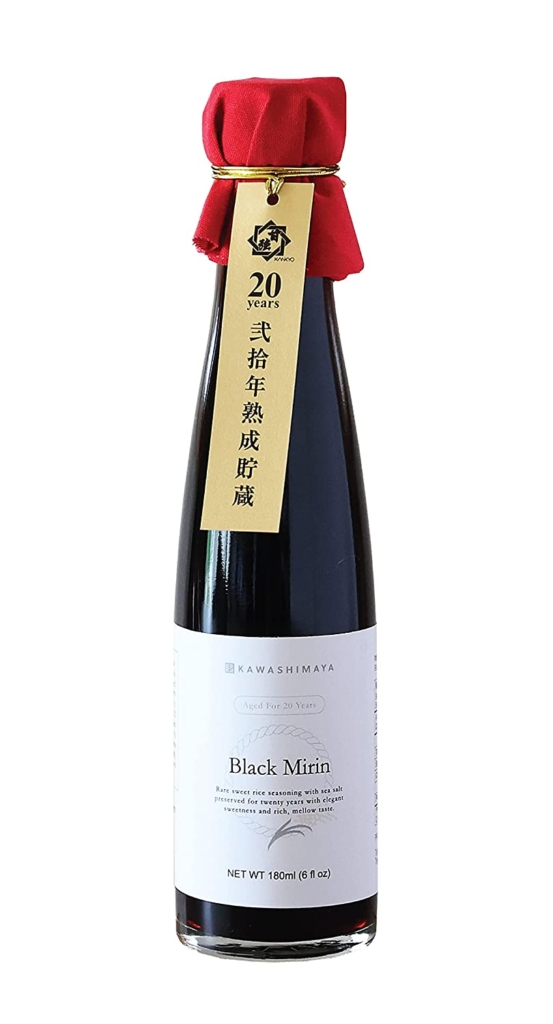
Black Mirin Sweet Rice Seasoning 180ml (2.7 fl oz) – Aged for 20 Years, Traditional Umami Cooking Wine, Made in Japan by Kawashimaya
Black Mirin is a carefully developed sweet rice cooking seasoning with continuous preservation for twenty years. It gives a luxury touch to every dish with completely different tastes from usual mirin. Vegan and Gluten-free. Use 100% Japanese domestic rice. Made in Japan.

